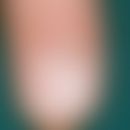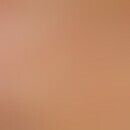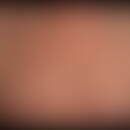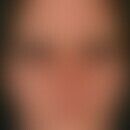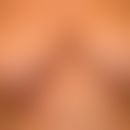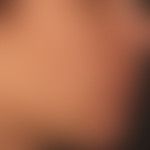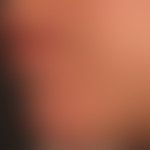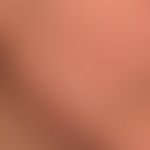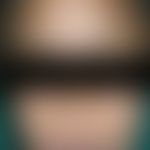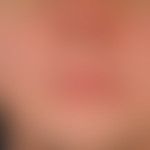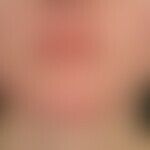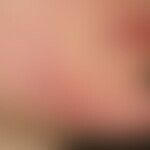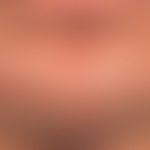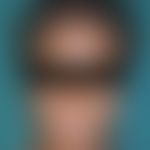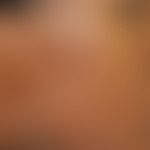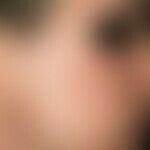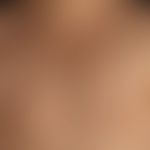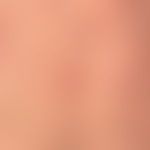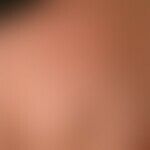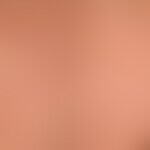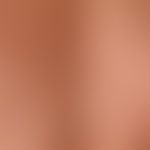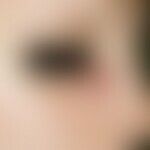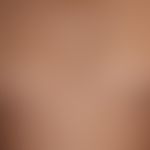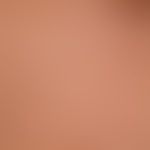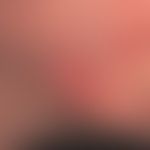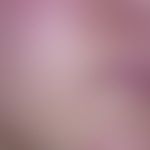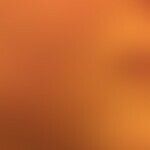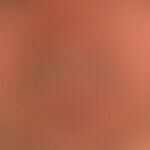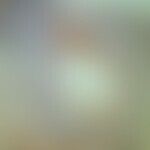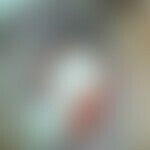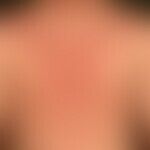Synonym(s)
DefinitionThis section has been translated automatically.
Common, chronic inflammatory, polyetiological disease of the sebaceous follicles that occurs in a large proportion of the population in adolescence in western industrialized nations. A chronic, continuous or relapsing course is typical.
ClassificationThis section has been translated automatically.
According to predominant efflorescences, 3 clinical types are distinguished, with transitional forms being more typical than rare:
Special forms of acne vulgaris
- Acne inversa
- Acne excoriée des jeunes filles
- Acne fulminans
- Acne mechanica
- Acne medicamentosa (drug-induced acne)
- Chlorine acne
- Acne neonatorum (see Pityrosporum folliculitis of the infant)
- Acne infantum
- Acne tropicalis
- Acne venenata
- Majorca acne
- Acne tarda
- Occupational acne
- Oil acne
- Tar acne
- X-ray acne
You might also be interested in
Occurrence/EpidemiologyThis section has been translated automatically.
Worldwide disease.
In Germany, 70-80% of all adolescents show signs of acne vulgaris of varying severity.
In the USA, 40-50 million people are affected annually. Affected are mainly male, less frequently female adolescents, and young adults aged 12-24 years.
In a British population study of women > 25 years, acne prevalence was 54%.
In a French study of women aged 24-40 years, the prevalence was 41%.
In a U.S. study, prevalence figures were 51% for women aged 30-39 years, 26% for women aged 30-39 years, and 15% for women aged 40-49 years.
Women are more commonly affected by late acne or acne tarda than men.
EtiopathogenesisThis section has been translated automatically.
Acne arises from a complex interplay of various pathogenetic factors. As a result of the plug-like closure of the follicular excretory duct and simultaneous seborrhea, the sebum is backed up into the follicular gland unit = comedo(acne comedonica). Follicular pustules(acne papulopustulosa) develop due to purulent melting. In severe cases (acneconglobata), follicular ruptures due to comedone components lead to pronounced inflammatory processes deep into the dermis, with furunculoid, often confluent, painful abscesses(acne conglobata). The main clinical symptoms are seborrhea, comedones and papulo-pustules. Due to the chronicity of the disease, treatment is designed to last for months or years.
A polyetiological mechanism is postulated for the aetiopathogenesis of acne. The following factors play a role:
-
Genetic factors
- Insulin resistance and hyperinsulinemia; elevated levels of IGF-1 (see insulin-like growth factor) correlate with the total number of acne lesions.
- Identical twins have a high concordance with regard to acne.
- Relevant gene polymorphisms are found in genes coding for androgen receptors, for enzymes of androgen metabolism, for tumor necrosis factor-alpha and for insulin-like-growth-factor.
-
Seborrhea (sebum is the "fuel of the acne flame"!)
- Sebum is produced holocrinally from sebocytes; the main components are triglycerides, fatty acid esters and squalene. Androgens regulate sebum production. The adrenal dehydroepiandrosterone sulphate (DHEA-S) is the primary physiological control hormone. It is enzymatically converted in sebocytes to more potent androgens such as testosterone and dehydrotestosterone.
- The ratio: saturated fatty acids/unsaturated fatty acids is increased
- Composition of the sebum is altered
-
Cornification disorders
- In the infundibulum of the sebaceous follicle, there is a differentiation disorder of the keratinocytes with increased proliferation and increased adhesiveness to each other. Interleukin-1 plays an initiating role here. The resulting proliferation-retention hyperkeratosis leads to the formation of initially clinically invisible microcomedones; further comedone growth with dilatation of the follicular ostium leads to open comedones that are darkly colored by melanin. Free palmitic acid and oleic acid have a comedogenic effect and induce the follicular keratinization disorder.
-
Bacterial colonization and biofilm formation by Propionibacterium acnes
- Propionibacteria (Propionibacterium acnes, now called Cutibacterium acnes) produce a matrix of glycocalyx polymers that are thought to increase keratinocyte adhesiveness (Degitz K et al. 2017). Free oleic acid in acne sebum promotes hyperconolization of the site germ P. acnes. Furthermore, propionibacteria produce esterases that release irritant fatty acids from triglycerides.
-
Insulin-like-growth-factor 1 (IGF-1)
- Insulin-like-growth-factor 1 (IGF-1): IGF-1 is an important growth hormone in adolescence. The growth factor is elevated in acne patients. It induces sebocytic lipogenesis in lipocytes and has a costimulatory effect with androgens (Melnik BC 2015). IGF-1 and insulin inhibit the transcription factor FoxO1 in sebocytes while simultaneously increasing mTORC1 activity (Mirdamadi Y et al. 2015). Acne does not occur in cases of congenital IGF1 deficiency(Laron syndrome) or in people with dysfunctional androgen receptors.
-
Insulin
- Acne is combined with increased insulin resistance(dietary factors; muscle-building products (colec products, casein concentrates, which lead to bodybuilding acne). IGF-1 and insulin inhibit the transcription factor FoxO1 in sebocytes (Mirdamadi Y et al. 2015). Known insulin resistance in acne-associated syndromes such as PAPA syndrome, SAPHO syndrome.
- Body mass index: A high body mass index is a risk factor for the development of acne in adolescents (Sas K et al. 2019).
- FoxO1: The Fox O1 protein (see forkhead box genes below) is a central switch in insulin regulation and glucose metabolism. FoxO1 inhibits important transcription factors of lipid synthesis such as: PPARgamma, LXRalpha, SREBP1 and the kinase mTORC1. FoxO1 also inhibits the androgen receptor (AR).
- Inflammatory readiness with interactions between sebaceous glands and perifollicular connective tissue.
- The significance of innate immunity for acne is focused on the activation of the inflammasome. P. acnis is ascribed an activating role through the secretion and activation of proinflammatory mediators (IL-1beta, NLPRP-3 inflammasome, activation of the caspase-1 pathway).
- Sebaceous gland hyperplasia (mostly androgen-stimulated)
- In women, polycystic ovary syndrome(PCOS) must be taken into account!
- Psychological factors
- Smoking can promote acne.
- Diet - foods with a high glycemic index, dairy products. These lead to a diet-related increased hyperglycaemic load and induction of insulin and IGF-1. In combination with the already high IGF1 serum levels in adolescence, this constellation leads to a promotion of seborrhoea and follicular hyperkeratosis (Melnik BC 2015).
- Medication:
- Anticontraceptives with a restandrogenic component (e.g. 19-nortestosterone derivatives)
- DHEA-S
- Anabolic steroids
- Lithium
- Vitamin B supplements (especially vitamin B12 - Kang D et al. 2015)
- EGFR inhibitors: The use of EGFR inhibitors shows, depending on the duration of therapy, a follicular (acneiform) papulo-pustular exanthema in the area of the seborrhoeic zones within a period of 2 weeks. Comedones are typically absent. The severity of the exanthema is considered an indicator of the therapeutic response to EGFR inhibitors. It is assumed that EGF exerts a control function for the inflammatory processes of acne vulgaris (Aydingoz IE et al. 2021).
Acne fulminans refers to acne conglobata with a severe immunological systemic reaction (feeling of illness, fever, bone pain, vasculitis).
ManifestationThis section has been translated automatically.
V.a. in adolescents and young adults; more pronounced in boys or men than in girls or women.
In Germany, 70-80% of all adolescents show signs of acne of varying severity.
In the USA, 40-50 million people are affected annually. Affected are mainly male, less frequently female adolescents, and young adults aged 12-24 years.
In a British population study of women > 25 years, acne prevalence was 54%.
In a French study of women aged 24-40 years, prevalence was 41%.
In a U.S. study, prevalence figures were 51% for women aged 30-39 years, 26% for women aged 30-39 years, and 15% for women aged 40-49 years.
Women are more likely to be affected by late acne or acne tarda than men.
LocalizationThis section has been translated automatically.
Infestation of the so-called seborrheic zones. Here mainly face, shoulders and back, upper sternal area.
Clinical featuresThis section has been translated automatically.
LaboratoryThis section has been translated automatically.
In severe and unclear cases of both sexes: BSG, CRP, BB, IgG, IgM, IgA, IgM, IgA, zinc, α-1-antitrypsin, TPHA.
If necessary, exclusion of HIV infection.
Women with signs of cycle disorders or androgenisation: total testosterone, free testosterone, SHBG, prolactin, DHEAS, androstendione.
Optional: LH, FSH, blood sugar, insulin, DHT, cortisol, estradiol, TSH.
HistologyThis section has been translated automatically.
Follicular hyperkeratosis, enlarged sebaceous glands.
DiagnosisThis section has been translated automatically.
- medical history: time of onset, progression (spontaneous, insidious), family history, cosmetics, medications, previous treatment, allergies, endocrinological diseases
- If necessary, laboratory values (see laboratory below)
- Hair type, physique (androgenisation in women)
- Determination of severity based on primary and secondary fluorescence and the severity of the manifestation
- Antibiogram from smear of comedone content, pustules or papules
- Antibiogram from a smear taken from the nasal mucosa (colonisation with Gram-negative germs, staphylococci, dermatophytes, yeasts, moulds)
- Biopsy if necessary
- Counting of precursor efflorescences on the cyanoacrylate preparation
- If necessary: skin function tests (lipometry, TEWL)
Differential diagnosisThis section has been translated automatically.
General therapyThis section has been translated automatically.
The therapy depends on the type of acne, the severity of the acne, the age of the patient and the skin type.
- A grading of the acne to assess the success of the therapy is useful before starting therapy: e.g. counting all acne lesions per half of the face or in a 20 x 20 cm field and classification according to open/closed, papules, papulopustules, nodules. See below acne comedonica, acne papulopustulosa.
- Cleaning: Purely mechanical with a microfiber glove, Claroderm and water without further additives.
- Regular, not too frequent washing with pH-neutral soaps is recommended, e.g. Sebopona, Cetaphil, Satina, Eubos, Stephalen wash gel, Sebamed liquid. Antiseptic or antibacterial cleansers are not indicated as they do not target Propionibacterium acnes or act deep within the follicle. Creams or emulsions of the O/W type are suitable for care, e.g. Toleriane, Physiane, Hydranorm, Avène Cleanance, Lutsine Kerafnia, Eucerin Rebalance, Eucerin Creme-Gel. Tinted acne therapies such as Aknichthol-Lotio are well suited as color-regulating topicals to cover the inflammatory redness.
- Avoid comedogenic topicals, especially cosmetics. If make-up is not avoided, make-up suitable for acne should be used, e.g. Unifiance from La Roche Posay or Lutsine make-up pencil, in each case after testing the color shade.
- Food should be chosen wisely to reduce the glycemic load (high proportion of unsaturated fatty acids, pulses, vegetables >> fruit).
In the treatment of acne scars, ablative, non-ablative lasers and radiofrequency microneedling have proven to be useful forms of therapy (Teymour et al. 2023)
External therapyThis section has been translated automatically.
The available acne therapeutics are used alone or in combination for the various forms of acne, depending on their optimal effect.
- Retinoids: Tretinoin and isotretinoin are the classic retinoids of the first and second generation respectively. Tretinoin is available in concentrations of 0.025 to 0.1% in the form of creams, solutions and gels (see below gels, hydrophilic, gels, hydrophobic), isotretinoin, previously available as a 0.05 to 0.1% gel or cream (e.g. Isotrex®), is currently no longer marketed, see table below. Gels and solutions should be preferred for seborrhoeic skin types, gels and creams for normal skin. Initially apply once a day, preferably in the evening, as slight reddening occurs, possibly also burning and itching. If well tolerated, this can be increased to 2 times/day. All other external acne treatments should be discontinued until the patient has become accustomed to the vitamin A acid. Avoid the corners of the mouth and eyelid region. In about 30% of patients, pustules appear after 2-4 weeks of treatment as a result of ruptures of the microcomedones. Despite this apparent blossoming of the acne, treatment should be continued. After about 4 weeks, "hardening" has taken place and the irritations recede. Direct sun exposure should be avoided as tretinoin and isotretinoin lower the erythema threshold and are not light-stable.
- A 4th generation retinoid has been available since the end of 2020: trifarotene, Selgamis®. This binds selectively to the retinoid receptor gamma and also has an anti-inflammatory effect. The large-area application (max. 2 g on face and trunk) also enables the treatment of acne on the trunk.
- Adapalene: (Differin® gel/cream, Dipalene® gel/cream) is a synthetic polyaromatic retinoid of the third generation. In addition to its comedolytic efficacy, it has a stronger anti-inflammatory effect than tretinoin and isotretinoin. It only needs to be applied once a day.
- Adapalene/ benzoyl peroxide (BPO) (e.g. Epiduo® Gel 0.1%/2.5%): The combination of retinoid and BPO is an approach that combines the advantages of both therapeutic modalities and does not involve the risk of antimicrobial resistance. Apply once a day, in the evening, as a thin film on the areas of skin affected by acne, after cleansing (e.g. Dermowas) and drying the skin.
- Tazarotene: Application (off-label use) of tazarotene (e.g. Zorac Gel 0.1%) overnight or 2 times/day for 5-10 minutes is comparable to the effectiveness of the above-mentioned retinoids according to studies.
- Remember! Topical retinoids are suitable for maintenance therapy as they have an anti-comedogenic effect and thus prevent the formation of new microcomedones. The success of therapy can generally only be assessed after 3 months: a reduction in the number of efflorescences (acne comedonica, acne papulopustulosa) of > 50% is considered a good response, a reduction of > 75% a very good response. Treatment should be continued as long as there are still signs of clinical activity.
- Azelaic acid: The substance has an antimicrobial effect in high concentrations, but the effect is not as pronounced as with benzoyl peroxide. Azelaic acid is used in a concentration of 20% (Skinoren). The onset of action is delayed compared to the other external acne therapeutics. Temporary irritation, scaling, burning and itching may occur in the first 2-4 weeks. As a rule, azelaic acid is often better tolerated than other external acne therapies, especially by sensitive skin (atopics). Azelaic acid can be administered during pregnancy. In addition to the cream form, a gel preparation is also available.
- Salicylic acid: Has a demonstrable comedolytic effect; the keratolytic activity is too weak in most concentrations used to be expected to have an effect on acne. Salicylic acid is used externally in different concentrations and combinations with other active agents. For preparations see Table 1.
- Benzoyl peroxide (BPO): Has a keratolytic and strong antimicrobial effect without the risk of developing resistance. Gram-positive germs, which are abundant in sebaceous glands, are rapidly destroyed. This applies in particular to Propionibacterium acnes. BPO is available in 1.5/3/5/10% concentrations in creams, emulsions, hydrogels and alcoholic gels, e.g. Akneroxid® Gel 5%-10%, Akneroxid L Suspension, Benzaknen® 5%-10%, Benzaknen® W Suspension, Sanoxit® 2.5-10%, Sanoxit® MT Suspension, Akneroxid® Gel 5%-10%. Emulsions are often better tolerated than gels. As a rule, the preparation is applied thinly once a day. After applying benzoyl peroxide, skin irritation may initially occur with drying of the skin, redness and scaling in the first few days to weeks. A habituation effect usually sets in within a few weeks. Special care should be taken when applying to atopic skin. Contact sensitization to BPO may occur in rare cases. Patients must be made aware of the fact that BPO discolors or bleaches hair, clothing, bed linen, towels, etc. Benzoyl peroxide can be used as a gel in 3.0, 5.0 or 10.0% concentration as a formulation (see benzoyl peroxide gel NRF 11.25. below). Benzoyl per oxide / clindamycin: Good clinical effects can be achieved with the BPO/CLN combination (DUAC® gel). This combination is superior to monotherapy with azelaic acid (Schaller 2016).
- Abrasives (peeling agents): Aluminum oxide (e.g. Brasivil) or polydimethyl silicone resin (e.g. Jaikin) have a slight peeling effect, but generally do not reach the comedones. Caution should be exercised in particular with simultaneous therapy with preparations such as vitamin A acid, benzoyl peroxide or azelaic acid.
- Peeling substances: α-hydroxy acids such as lactic acid and glycolic acid for the reduction of hyperkeratosis are repeatedly recommended, see also chemical peeling below.
- Fruit acids (α-hydroxy acids): α-hydroxy acids reduce corneocyte adhesion and thus keep the follicular ostia open, which leads to a reduction in the number of comedones. The indication is mainly given for follicular hyperkeratosis. Application: 1 time/day, 2 times/day if well tolerated. Subsequent chemical peeling with 70% glycolic acid and manual physical acne therapy bring faster success. α-Hydroxy acids can also be used with sun exposure. Effective after 6 weeks.
- Antibiotics: Three main groups of antibiotics are used in external acne therapy: tetracyclines, erythromycin (e.g. Aknemycin® ointment/solution, Eryaknen® 2-4% gel), clindamycin (e.g. Basocin® acne solution; Basocin® acne gel; DUAC® gel [combination with BPO]). Nadifloxacin (Nadixa® cream) has also been used for some time. However, the growth inhibition of Propionibacterium acnes with externally applied antibiotics is inferior to that of benzoyl peroxide. According to study results, clindamycin and erythromycin show the best results with inflammatory acne. Local side effects include redness, scaling and burning of the skin. Rarely, bloody diarrhea and colitis (including pseudomembranous colitis) can also occur after topical application of clindamycin. Topical antibiotics are generally used in combination with topical retinoids (Aknemycin® plus), salicylic acid, BPO or abrasives and should be limited in time due to the risk of resistance developing. Long-term use can lead to a selection of the germ spectrum in favor of gram-negative pathogens, in the sense of gram-negative folliculitis.
- Glucocorticoids: They can be used in ointment or cream form for a few days in the case of highly inflammatory acne. Intralesional application is possible for abscessing nodules.
Radiation therapyThis section has been translated automatically.
UV phototherapy: The use of UVB rays or UVA and UVB rays leads to an improvement in symptoms. UV phototherapy is no longer up to date due to an unfavorable risk-benefit ratio.
Although photodynamic therapy is effective, it cannot be recommended as a routine procedure due to the not insignificant side effects (Degitz K et al. 2017).
Combined light therapy using an LED mask with blue and red light (wavelength 445 nm and 630 nm) shows a significant reduction in inflammatory and non-inflammatory acne efflorescences in studies (Nestor MS et al., 2016).
Internal therapyThis section has been translated automatically.
Systemic treatment is reserved for the severe form of acne vulgaris that is not optimally amenable to external therapy.
Antibiotics (tetracyclines and macrolide antibiotics [e.g. erythromycin, roxithromycin]) are the standard preparations. The antibiotic of first choice is minocycline (e.g. Skid, Aknosan, Klinomycin), followed by doxycycline (e.g. Doxakne).
- Tetracyclines: Minocycline is generally better tolerated than doxycycline, but considerably more expensive. The initial dosage of minocycline (Skid®) is 50 mg p.o. twice a day (with a meal), then reduced to a maintenance dose of 50 mg/day. Doxycycline (e.g. Doxyderma): 1 time/day 50 mg p.o. Tetracycline (Tefilin): 1500 mg/day, if necessary also higher doses, initially 3 times/day 500 mg (before meals, no milk) for 1-2 months. Attention should be paid to the phototoxic effect of this substance group, which is less pronounced with doxycycline than with tetracycline hydrochloride; minocycline is considered safer in this respect.
-
Remember! Many tetracyclines have a phototoxic effect!
Remember! No combination with systemic retinoids!
- Macrolide antibiotics: Erythromycin should be given in a dosage of 500-1000 mg/day; Roxithromycin in a dosage of 150-300 mg/day
. The dangers of long-term systemic antibiotic treatment include the development of resistance, gram-negative folliculitis and recurrence of papulopustules!
Hormone therapy (only for women): Cooperation with gynecologists. Hormonal therapy for girls who are not yet sexually active should be started at the earliest two years after menarche. If there is a need for contraception and acne, however, the prescription of an anti-androgenic OH is the therapy of first choice.
- Oestrogens: Oestrogens inhibit sebum production. A few contraceptives contain 50 µg ethinylestradiol (= sufficient quantity to inhibit sebum production), but are rarely used in practice. Standard doses are 20-35 µg. Natural oestrogens (estradiol valerate, estradiol, estestrol) are also used.
-
Antiandrogens: In acne patients, an accelerated androgen metabolism can be observed in the sebaceous glands with a consecutively increased mitosis rate in the sebocytes and stimulation of lipid synthesis. Cyproterone acetate (CPA) has a 100% anti-androgenic and progesterone effect. It inhibits all androgen-dependent organs and thus also the sebaceous glands. It is only indicated for women and is restricted to moderate and severe acne, hirsutism and androgenetic alopecia. A combination with ethinylestradiol is indicated due to the expected cycle disorders. Combination preparations are e.g. Diane 35, Juliette, Jennifer 35.
Dienogest has 40% antiandrogenic efficacy (Valette, Maxim, Aristelle) and is approved for acne therapy in addition to contraception. Drospirenone has 30% antiandrogenic efficacy (Yasmin, Petibelle, Xellia) and also has an antimineral corticoid effect. Chlormadinone acetate has 20% antiandrogenic efficacy. - In severe cases, COC therapy can be supplemented by the administration of 5-10 mg CPA (e.g. Androcur 10 mg) over 15 days (see Table 3).
-
Caution! Thromboembolic complications occur particularly in smokers, overweight patients or patients with arteriosclerosis.
Patients with livedo racemosa, Sneddon's syndrome are excluded from antiandrogen therapy. The prescription of antiandrogens belongs in the hands of the gynecologist. The indication is given by the dermatologist, dosage, implementation and control of the therapy are left to the gynecologist. The duration of therapy should be at least 1 year, possibly years, also in combination with isotretinoin. An improvement in acne is to be expected after 2-3 months of therapy at the earliest. Problems arise when hormone therapy is discontinued: rebound with eruption of papulopustules.
Isotretinoin (e.g. Acnenormin) is indicated according to the European Medicines Directive (EMA) for severe inflammatory forms of acne vulgaris with the risk of permanent scarring. The prescription for acne conglobata or nodular acne is undisputed.
- Please note! When prescribing isotretinoin to women of childbearing age, a pregnancy test must be carried out before starting therapy and safe contraception must be used one month before starting therapy, throughout the course of therapy and one month after the end of therapy (some authors recommend up to 3 months).
- Caution! Teratogenicity: Not approved for women of childbearing age. The civil and possibly also criminal responsibility therefore lies explicitly with the treating physician!
- Recurrences: As a rule, adequate therapy with isotretinoin leads to long-lasting remissions (weeks to years). After discontinuation of isotretinoin, a relapse may occur. This is usually milder than the original acne. The recurrence rate is inversely proportional to the therapeutic dose administered. With a cumulative dose < 120 mg/kg bw, a recurrence is much more likely than with a total dose > 120 mg/kg bw, which is why this dose should be reached if possible. In the event of recurrence, repeat therapy may be necessary in some cases.
- Care measures: To alleviate the unpleasant side effects of dry lips, local moisturizing lip care products, e.g. Rolip Emulsion, Rolip Mandelic, Labello or similar can be used.
- Combinations with hormones: In the case of severe inflammatory acne conglobata or acne fulminans, combination therapies with hormones (antiandrogens, anticontraceptives, glucocorticoids) are possible. In particular, a time-limited use of glucocorticoids can, in individual cases, bring about a significant reduction in the inflammatory reaction in severely inflammatory acne.
IL-17A antibody: Therapeutic approaches for severe acne vulgaris with a monoclonal antibody directed against the interleukin IL-17A have not proved successful (Thiboutot M et al. 2023).
Progression/forecastThis section has been translated automatically.
Acne usually starts around the age of 12. However, clinical symptoms may occur in some patients as early as the 7th to 9th year of life. In most cases it ends spontaneously, at the end of the growth phase, between the ages of 17 and 25. In some patients, however, the acne continues into the fourth and fifth decade (persistent acne) or does not begin until older age (acne tarda).
NaturopathyThis section has been translated automatically.
see also under phytotherapy
In a double-blind, placebo-controlled study (n=82), the daily intake of lactoferrin (250mg/day p.o.) in combination with vitamin E and zinc proved to be successful for mild to moderate acne vulgaris (Chan H et al. 2017).
Restoration of the microbiome (totality of all microorganisms and their genes), whereby a connection between the gut and skin microbiome, the so-called gut-skin axis, is known. A disruption of this microbiome, a dysbiosis, has been described in acne patients. Probiotics also have an inhibitory effect on the proliferation of C. acnis.
Order therapy: Avoidance of triggering causes, see also under diet/lifestyle, reduction of psychological stress, avoidance of manipulation of the acne lesions
Hydrotherapy: Moist compresses with astringent, drying plants such as oak bark, black tea
Peloid therapy: masks with healing earth for pustules and papules
Phytotherapy, see below
TablesThis section has been translated automatically.
Keratolytic/comedolytic topicals in acne therapy
Active agents |
Preparation |
Concentration |
Example preparations |
||
Monopreparations |
Tretinoin |
solution |
0,05% |
Airol |
|
Cream |
0,05% |
Cordes VAS, Airol |
|||
Isotretinoin |
Gel, Cream |
0,05% |
Isotrex |
||
0,1% | |||||
Benzoyl peroxide |
Gel |
2,5% |
PanOxyl Acne, Clinoxide, Sanoxit |
||
5% |
PanOxyl Acne, Sanoxite, Benzacne |
||||
10% |
Sanoxite, Benzacnene |
||||
Emulsion |
5% |
PanOxyl mild |
|||
10% |
PanOxyl W emulsion |
||||
Cream |
2,5% |
PanOxyl mild |
|||
5% |
PanOxyl mild, clinical oxide |
||||
10% |
Clinoxide forte |
||||
Washing emulsion |
10% |
PanOxyl W, benzacne |
|||
Azelaic Acid |
Cream |
15% |
Skinoren |
||
Adapalene |
Cream, Gel |
0,1% |
Differin |
||
Salicylic acid |
Solution |
5% |
214 |
||
|
10% |
214 |
|||
Sulphur |
Cream |
3% |
Sulphur Diasporal |
||
| |||||
Combinations of active ingredients |
|||||
Combination preparations |
Adapalene | Benzoyl peroxide | Gel | 0,1-0,3%/2,5% | Epiduo® |
Salicylic Acid |
Lactic acid |
Solution |
0,5/0,2% |
Aknederm Tincture N |
|
Salicylic Acid |
Na-Bituminosulf. |
Lotio |
0,5/1% |
Aknichthol N/soft |
|
ammonium bit. |
Zinc oxide |
Ointment |
2/10% |
Aknederm Ointment New |
|
Salicylic acid |
Lactic acid |
Tincture |
0,5/0,2% |
Akaderm Tincture N |
|
Sulfur Diaspora |
Sulphur |
Camphor |
Milk |
0,1/0,36% |
l |
Locally acting antibiotics
Generic |
Preparation |
Concentration |
Example preparation |
Tetracycline |
Ointment |
3% |
Imex ointment, Achromycin ointment |
Erythromycin |
Solution |
2% |
Acnefug El |
Gel |
2% |
Aknederm Ery Gel |
|
Emulsion |
1% |
Aknemycin |
|
Cream |
2-4% |
||
Ointment |
2% |
Aknemycin ointment |
|
Clindamycin |
Gel |
1% |
Basocin, Zindaclin |
Solution |
1% |
Basocin Acne Lsg. |
|
Clindamycin/BPO |
Gel |
1%/5% |
Duac Acne Gel |
Nadifloxacin |
Cream |
1% |
Nadixa |
Hormone therapy for severe acne in women
Example preparation |
Dosage |
Application period |
Diane 35 |
2 mg cyproterone acetate/35 μg ethinyl estradiol + |
1st-21st day of cycle, 7 days off. |
Androcur 10 |
5-10 mg cyproterone acetate |
1st-15th day of cycle1/2-1 tbl/day. |
Acne therapeutics according to efficacy
|
Active substance |
Follicular hyperkeratosis |
Seborrhea |
Microbial colonisation |
Inflammation |
External |
Benzoyl Peroxide |
(+) |
- |
+++ |
+ |
Azelaic acid |
+ |
- |
++ |
+ |
|
Isotretinoin |
++ |
+ |
+ |
- |
|
Tretinoin |
++ |
- |
+ |
- |
|
Adapalene |
++ |
- |
+ |
++ |
|
Salicylic acid |
+ |
- |
+ |
(+) |
|
Resorcinol |
- |
(+) |
+ |
+ |
|
Sulphur |
- |
(+) |
- |
- |
|
Alumina |
++ |
(+) |
- |
- |
|
Tioxolone |
- |
+ |
+ |
+ |
|
Na-Bituminosulf. |
- |
+ |
(+) |
- |
|
Internal |
Chlormadinone acetate |
- |
+ |
- |
- |
Cyproterone acetate |
- |
++ |
- |
- |
|
Isotretinoin |
++ |
+++ |
(+) |
++ |
|
Tetracyclines |
- |
- |
++ |
+ |
|
- not effective; (+) weakly effective; + moderately effective; ++ strongly effective; +++ very strongly effective | |||||
Mild forms |
Moderate forms |
Severe forms |
|||
|
Acne comedonica |
Acne papulopustulosa |
Acne papulopustulosa (severe) |
Nodular acne |
Nodular acne/ A. conglobata |
1st choice |
Topical retinoid |
Topical retinoid + top. antibact. drug |
Oral antibiotic + top. Retinoid ± BPO |
Oral antibiotic + top. Retinoid ± BPO |
Oral isotretinoin |
Alternatives |
Other top. Retinoid or azelaic acid or salicylic acid |
Topical retinoid + top. antibact. drug + other top. retinoid or azelaic acid or salicylic acid Retinoid or azelaic acid |
Other oral antibiotic + other topical retinoid ± BPO |
Oral isotretinoin or other oral antibiotic + other topical retinoid ± BPO |
High dose oral antibiotic + top. Retinoid + BPO |
Alternatives for women |
See below 1st choice |
S.u. 1st choice |
Oral antiandrogen + top. Retinoid/azelaic acid ± top. antibact. drug |
Oral antiandrogen + top. Retinoid ± oral antibiotic ± other antibact. drug |
High dose oral antiandrogen + top. Retinoid ± other top antibacterial drug |
Maintenance therapy |
Topical retinoid |
Topical retinoid ± BPO |
|||
Diet/life habitsThis section has been translated automatically.
Scientifically, a triggering of acne vulgaris by food was not proven for a long time. In the meantime, there is a solid evidence on the pathophysiological connection between acne and nutrition, in particular the western dietary style. However, insulin, IGF-1 (see insulin-like growth factor), hyperglycemic diet, highly processed cereal products, polyunsaturated fats and milk play a role in the pathogenesis of acne. High dairy consumption leads to a significant increase in insulin and IgF-1, comparable to a high glycemic index diet. This leads to a stimulation of anabolic signaling pathways with increased lipid synthesis, increased proliferation activity of the follicular epithelium and thus triggering of the acne florescences (see table). Lifestyle habits, lack of sleep, stress, environmental factors like air pollution, climate and solar radiation also play an important role.
Meals should be interspersed with breaks of several hours to reduce insulin and IGF 1 (insulin-like growth factor) levels.
| Recommendations for the prophylaxis and dietary treatment of acne before (modified after B. Melnik) | |
| Acne promoting factors | Prophylaxis/recommendations |
| Food and luxury food with acne-inducing effect | Food and luxury food without acne-inducing effect |
| Milk, milk products, cream cheese, whey protein concentrates | raw vegetables, fruits, vegetables, blue berries, soy products, tomatoes |
| Milk chocolate, sweets, lemonade, potato chips, corn flakes, other carbohydrates with a high glycemic index such as: fine flours: white bread, rice, potatoes, wheat pasta, fast food | Wholemeal bread and cow's milk free cereals, plenty of fibre with high fibre content, no fast food. |
| Saturated fats e.g. in lard, pork liver, liver sausage, egg yolk | High in omega-3 fatty acids, e.g. sea fish, seafood, chia, linseed, hemp seed, algae. |
| Smoking | Abstain from smoking |
| Frequent snacks between meals and breaks | Taking complete breaks from food intake for several hours at a time |
| Sweetened soft drinks (e.g. Coca Cola) | Mineral water, unsweetened tea, also green tea |
| Lack of exercise, overweight | Sport, ideal weight |
Phytotherapy externalThis section has been translated automatically.
Phytopharmaceuticals are sufficiently effective exclusively for mild to moderate acne.
The only indication for acne is mahonia bark in a 10 % ointment preparation.
Furthermore, externals with extracts of Mediterranean myrtle (Myrtacin®) have proven effective. This is contained, among others, as Keracnyl (Ducray). Myrtacin destroys the biofilm of Propionibacterium acnes. Myrtle-saw palmetto extracts: in clinical studies an antimicrobial and anti-acne effect could be proven by a combination of nicotinamide, saw palmetto and myrtle extracts (active ingredient is myrtacin). This naturopathic combination inhibits the formation of a biofilm by propionibacteria (Keracnyl®). It can be used as first-line therapy for minimal to moderate inflammatory acne.
Furthermore, tanning drugs, as well as anti-inflammatory plant ingredients (as aqueous poultices) can help to alleviate the pustular form of acne. These include:
- Hamamelis
- moist compresses with black tea
- Tea tree oil - cave wrongly stored tea tree oil- allergic skin reactions! increased peroxide formation with irritation!
- Chamomile
- Sage
- Peloids: Alternatively or complementary, masks with healing clay can significantly reduce pustules and papules. Following the healing earth mask, apply a moisturizer.
for mild acne pustulosa external: Echinacea purpura radix
Note(s)This section has been translated automatically.
The capsule material of Isotretinoin contains peanut ingredients! This drug is contraindicated in peanut allergies. Alternatively, a "low dose" dosage (the peanut-free) of acitretin (0.3 mg/kg bw) can be used.
LiteratureThis section has been translated automatically.
- Aubert J et al (2018) Nonclinical and human pharmacology of the potent and selective topical retinoic acid receptor-γ agonist trifarotene. Br J Dermatol 179:442-456
- Aydingoz IE et al (2021) The investigation of the amounts and expressions of epidermal growth factor, epidermal growth factor receptor, and epidermal growth factor receptor gene polymorphisms in acne vulgaris. J Cosmet Dermatol 20:346-351.
- Bacharach-Buhles M et al (2011) Acne. hautnah dermatologie 27: 327.
- Baldwin H et al (2020) Effects of diet on acne and its response to treatment. Am J Clin Dermatol 22:55-65.
- Burkhart CN et al (2003) Microbiology's principle of biofilms as a major factor in the pathogenesis of acne vulgaris. Int J Dermatol 42: 925-927
- Chan H et al. (2017) A randomized, double-blind, placebo-controlled trial to determine the efficacy and safety of lactoferrin with vitamin E and zinc as an oral therapy for mild to moderate acne vulgaris. Int J Dermatol 56:686-690.
- Cordain L et al (2002) Acne vulgaris: a disease of Western civilization. Arch Dermatol 138: 1584-1590.
- Degitz K et al (2017) Acne. J Dtsch Dermatol Ges 15: 709-721.
- Fiorini-Puybaret C et al.(2011) Pharmacological properties of Myrtacine® and its potential value in acnetreatment. Planta Med 77:1582-1589.
- Goodarzi A et al. (2020) The potential of probiotics for treating acne vulgaris: a review of literature on axne and microbiotica. Dermatol Ther 33: 13279
- Gürtler A (2021) Acne and nutrition - relevance for clinical practice. Compendium Dermatology 2021: 35-41
- Itoh Y (2002) Photodynamic therapy for acne vulgaris with topical 5-aminolevulinic acid. Arch Dermatol 136: 1093-1095.
- Kang D et al. (2015) Vitamin B12 modulates the transcriptome of the skin microbiota in acne
- pathogenesis. Sci Transl Med 7:293ra103.
- Kawashima M et al (2014) Is benzoyl peroxide 3% topical gel effective and safe in the treatment of acne vulgaris in Japanese patients? A multicenter, randomized, double-blind, vehicle-controlled, parallel-group study. J Dermatol 41:795-801
- Leyden JJ (2003) A review of the use of combination therapies for the treatment of acne vulgaris. J Am Acad Dermatol 49: S200-210.
- Melnik B (2010) Acne vulgaris, dermatologist 61: 115-125.
- Melnik BC et al (2015) Linking diet to acne metabolomics, inflammation, and comedogenesis: an update.Clin Cosmet Investig Dermatol 8:371-388.
- Mirdamadi Y et al. (2015) Insulin and insulin-like growth factor-1 can modulate the phosphoinositide-3-kinase/Akt/FoxO1 pathway in SZ95 sebocytes in vitro. Mol Cell Endocrinol 415:32-44.
- Nestor MS et al. (2016) Efficacy and Tolerability of a Combined 445nm and 630nm Over-the-counter Light Therapy Mask with and without Topical Salicylic Acid versus Topical Benzoyl Peroxide for the Treatment of Mild-to-moderate Acne Vulgaris. J Clin Aesthet Dermatol 9: 25-35.
- Plewig G (2010) How acne vulgaris develops. Dermatologist 61: 99-106
- Sas K et al. (2019) High Body Mass Index is a Risk Factor for Acne Severity in Adolescents: A Preliminary Report.Acta Dermatovenerol Croat 27:81-85 .
- Schaller M et al.(2016) A multicentre,randomized, single-blind, parallel-group study comparing the efficacy and tolerability of benzoyl peroxide 3%/clindamycin 1% with azelaic acid 20% in the topical treatment of mild-to-moderate acne vulgaris. J Eur Acad Dermatol Venereol 30:966-973.
- Seaton ED et al (2003) Pulsed-dye laser treatment for inflammatory acne vulgaris: randomised controlled trial. Lancet 362: 1347-1352.
- Skidmore R et al (2003) Effects of subantimicrobial-dose doxycycline in the treatment of moderate acne. Arch Dermatol 139: 459-464
- Szanto M et al (2019) Targeting the gut-skin axis-probiotics as new tools for skin disorder management? Exp Dermatol 28: 1210-1218
- Thiboutot DM et al (2023) Anti-IL-17A blockade did not significantly reduce inflammatory lesions in a placebo-controlled pilot study in adult patients with moderate to severe acne. J Dermatolog Treat 34:2138691.
- Zouboulis CC (2014) Acne vulgaris. Dermatologist 65:733-747
Incoming links (104)
Acne aggregata; Acne agminata; Acne androgenetica; Acne comedonica; Acne conglobata; Acne cystica; Acne excoriée; Acne indurata; Acne inversa; Acne keloidalis nuchae; ... Show allOutgoing links (111)
Abscess; Acne comedonica; Acne conglobata; Acne excoriée; Acne fulminans; Acne infantum; Acne inversa; Acne mechanica; Acne medicamentosa; Acne (overview); ... Show allDisclaimer
Please ask your physician for a reliable diagnosis. This website is only meant as a reference.
Images (27)
Articlecontent
- Definition
- Classification
- Occurrence/Epidemiology
- Etiopathogenesis
- Manifestation
- Localization
- Clinical features
- Laboratory
- Histology
- Diagnosis
- Differential diagnosis
- General therapy
- External therapy
- Radiation therapy
- Internal therapy
- Progression/forecast
- Naturopathy
- Tables
- Diet/life habits
- Phytotherapy external
- Note(s)
- Literature
- References
- Authors
